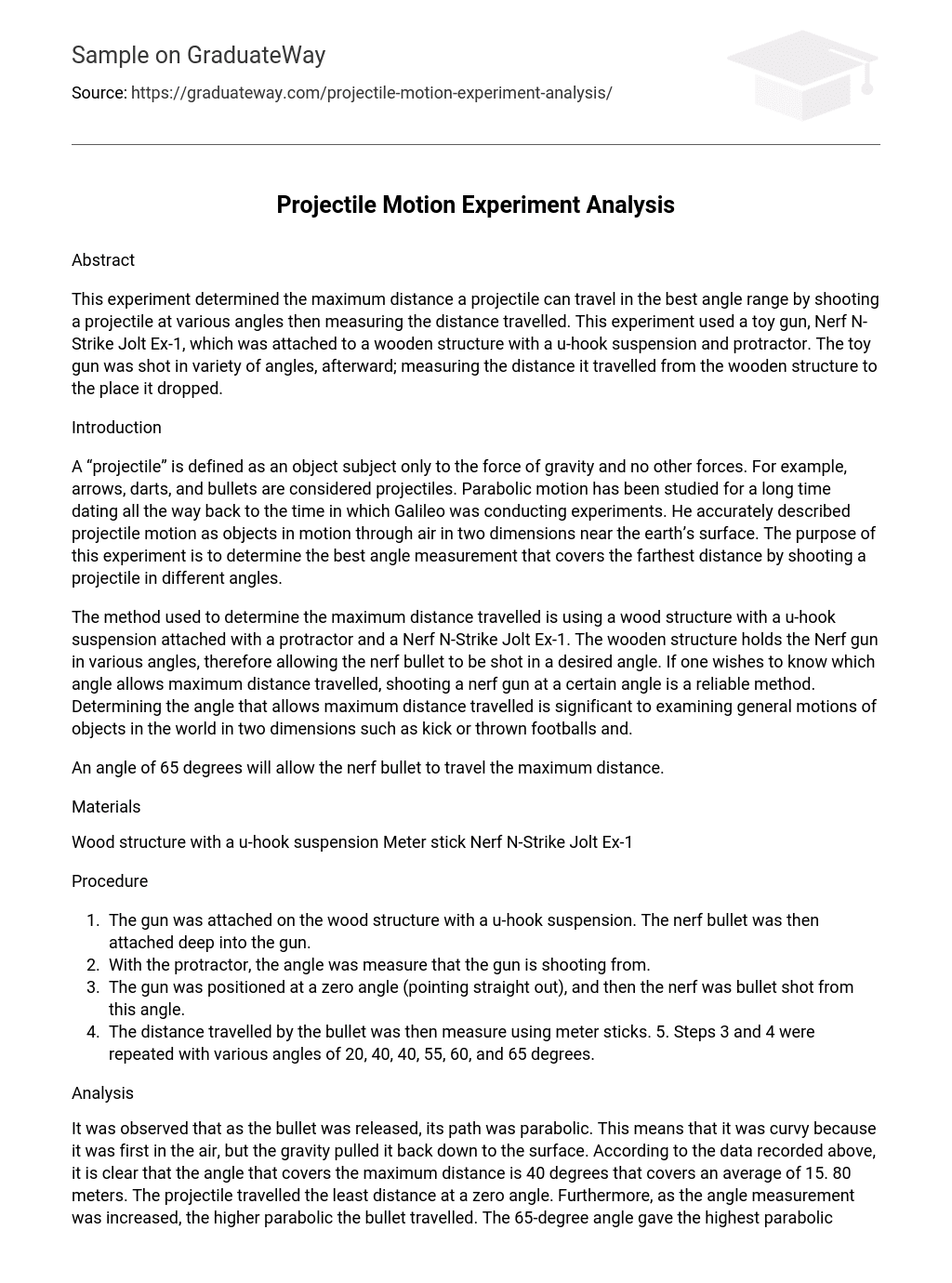Abstract
This experiment determined the maximum distance a projectile can travel in the best angle range by shooting a projectile at various angles then measuring the distance travelled. This experiment used a toy gun, Nerf N-Strike Jolt Ex-1, which was attached to a wooden structure with a u-hook suspension and protractor. The toy gun was shot in variety of angles, afterward; measuring the distance it travelled from the wooden structure to the place it dropped.
Introduction
A “projectile” is defined as an object subject only to the force of gravity and no other forces. For example, arrows, darts, and bullets are considered projectiles. Parabolic motion has been studied for a long time dating all the way back to the time in which Galileo was conducting experiments. He accurately described projectile motion as objects in motion through air in two dimensions near the earth’s surface. The purpose of this experiment is to determine the best angle measurement that covers the farthest distance by shooting a projectile in different angles.
The method used to determine the maximum distance travelled is using a wood structure with a u-hook suspension attached with a protractor and a Nerf N-Strike Jolt Ex-1. The wooden structure holds the Nerf gun in various angles, therefore allowing the nerf bullet to be shot in a desired angle. If one wishes to know which angle allows maximum distance travelled, shooting a nerf gun at a certain angle is a reliable method. Determining the angle that allows maximum distance travelled is significant to examining general motions of objects in the world in two dimensions such as kick or thrown footballs and.
An angle of 65 degrees will allow the nerf bullet to travel the maximum distance.
Materials
Wood structure with a u-hook suspension Meter stick Nerf N-Strike Jolt Ex-1
Procedure
- The gun was attached on the wood structure with a u-hook suspension. The nerf bullet was then attached deep into the gun.
- With the protractor, the angle was measure that the gun is shooting from.
- The gun was positioned at a zero angle (pointing straight out), and then the nerf was bullet shot from this angle.
- The distance travelled by the bullet was then measure using meter sticks. 5. Steps 3 and 4 were repeated with various angles of 20, 40, 40, 55, 60, and 65 degrees.
Analysis
It was observed that as the bullet was released, its path was parabolic. This means that it was curvy because it was first in the air, but the gravity pulled it back down to the surface. According to the data recorded above, it is clear that the angle that covers the maximum distance is 40 degrees that covers an average of 15. 80 meters. The projectile travelled the least distance at a zero angle. Furthermore, as the angle measurement was increased, the higher parabolic the bullet travelled. The 65-degree angle gave the highest parabolic motion. Also, as the angle measurement increases the distance covered also increases then it decreases when the angle reaches above 40 degrees.





